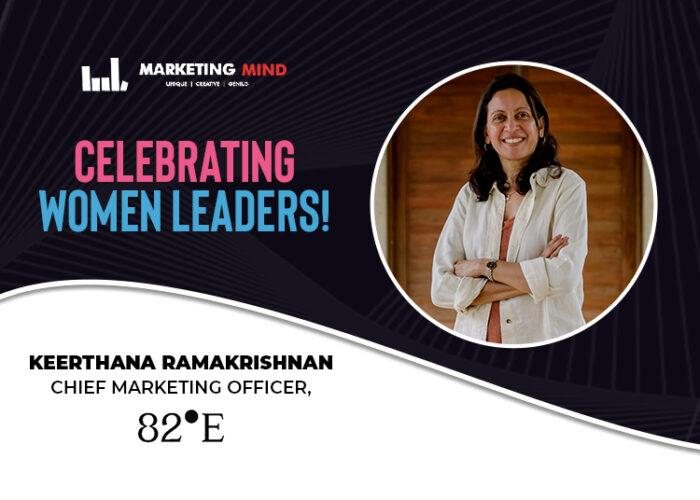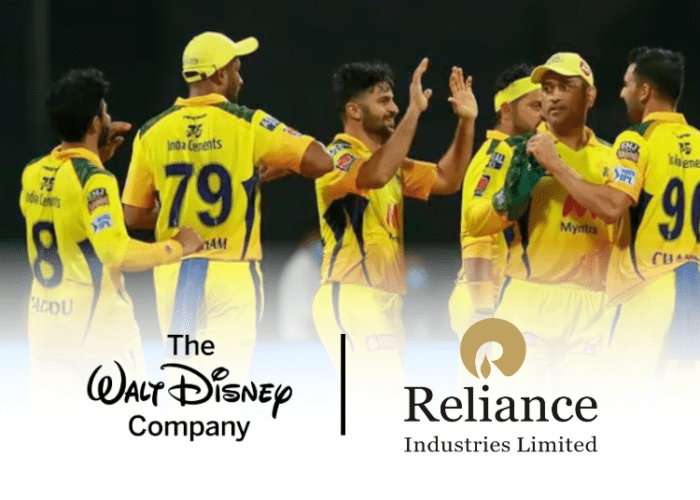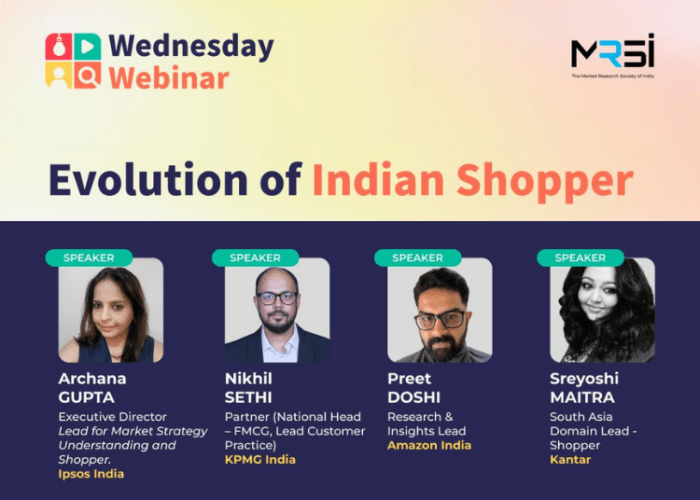In today’s ever-evolving shopping landscape, with the proliferation of digital and e-commerce channels, consumers have got an array of options to choose from when it comes to shopping, be it offline or online. That being said, the pandemic has also had a strong role in evolving the Indian shoppers.
Keeping pace with this, the Market Research Society of India (MRSI) conducted a webinar on the ‘Evolution of Indian Shopper’, featuring a panel of industry professionals ranging from Archana Gupta, Executive Director at Ipsos India and Lead for Market Strategy Understanding and Shopper; Preet Doshi, Research & Insights Lead from Amazon India; Nikhil Sethi, Partner (National Head, FMCG, Lead Customer Practice) at KPMG India; and Sreyoshi Maitra, South Asia Domain Lead- Shopper, Kantar.
During the webinar, the panelists presented a slide deck that highlighted how Indian shoppers are adopting a combination of online and offline purchases and also revealed that as more people engage in omnichannel shopping, there has been a spurt in the desire for personalisation to enhance the shopping experience.
Presenting her views on the growing trend of ‘Research Online, Purchase Offline’ in India’s e-commerce landscape where people research online and buy offline, Kantar’s Maitra emphasised that this trend particularly stands true for electronic goods since detailed information regarding the products in this category is available online and yet people still prefer a tactile experience before buying.
In contrast, for products like clothes and shoes, people prefer to try them out offline before buying them online at a lower price, she said, highlighting the increasing popularity of online shopping in India.
“Social commerce has brought back the personal touch and feel of shopping through features such as direct messaging, video sharing, and group conversations. Many small-scale companies have been able to provide this interpersonal communication, which has proven to be successful among niche audiences. As a result, people have returned to physical stores with renewed enthusiasm as the pandemic situation has improved,” she opined.
Taking cue from this, Ipsos’ Gupta shared insights into how COVID acted as an inflection point to get the boom in Online shopping and delved deep into what all has changed in the aftermath of the same.
“We are currently the fastest-growing e-commerce market globally, with a growth rate of 14%. By next year, nearly 9 out of 10 Indian households will have internet access, which is a significant indicator. This implies that the number of annual shoppers in India will increase significantly,” she said.
With this, she also went on to point out that the growing popularity of online shopping, especially among women who prioritize speed, personalisation, and quality proof like ratings and reviews has brought about an increased demand of specialized platforms for various categories to enhance convenience.
“While businesses can tailor experiences using shopper behavior data and innovative strategies to stand out, increased information accessibility and proximity to reviews are crucial for influencing purchase decisions,” she suggested.
Over the course of the webinar, she also drew attention to the fact that since online shopping allows one to explore and discover various categories such as beauty, fashion, groceries, electronics, and more, it offers multiple ways to shop, enabling one to research, compare, and add items to individual carts to buy later, making one’s shopping experience more informed and convenient.
Discussing how India’s urbanization is driving trends among millennials and Gen Zs and reshaping consumption patterns, Amazon’s Doshi mentioned that four key trends are emerging in times like today- aspirational lifestyle upgrades, choice abundance, considered recklessness, and visual culture explosion.
“The line between commitment and fantasy blurs during promotions, driven by FOMO and deep discounts, with high online sales participation rates. Barriers to purchase vanish with options like no-cost EMI and buy now, pay later, leading to remarkable stories of unconventional purchases. This trend signifies a significant shift in consumer behavior,” he said.
He also went on to add that fueled by increased social interactions, social commerce which includes using video calling for purchases and creating visual catalogs on platforms like Instagram and Pinterest, is on the rise.
But even so, in his viewpoint, it is the AI-driven enhancements which promise faster content delivery and innovation in product displays that are accelerating shopping experiences.
Sharing his insights on achieving seamless commerce and customer loyalty through the customer experience, KPMG’s Sethi also said, “As the AppStream consumer demographic gains spending power, companies are fiercely competing for larger market share by prioritizing exceptional customer experiences. This shift spans various sectors, reflecting consumer preferences for quality service.”
It is owing to the aforementioned industry shift that the importance of prioritizing the customer experience for both online and offline retailers has increased all the more in the modern industry landscape, in his viewpoint.
“This entails integrating e-commerce, backend investments, and empowering workforces to deliver seamless experiences. The entire organization must align to ensure promises are fulfilled, bridging the gap between marketing, technology, and delivery. Understanding consumer behavior and subconscious shopping habits is key to success in today’s market landscape,” he said.












